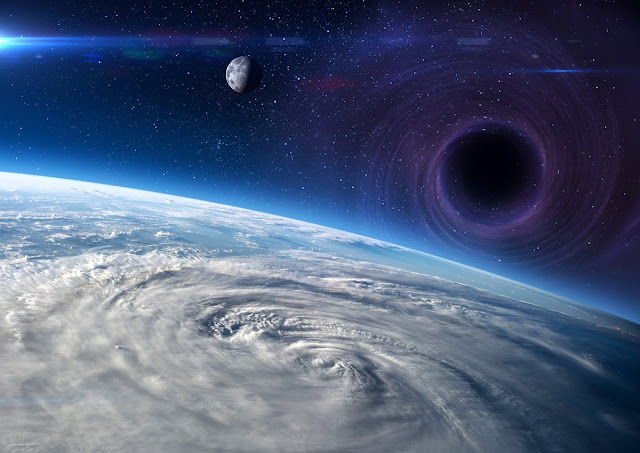Existence of the black holes in space was first proposed by a mathematician John Michell in 1783, and later by physicist Albert Einstein's theory of general relativity in 1915. But it wasn't until the 1960s that scientists were able to observe and study black holes directly.
Black holes are one of the universe's most fascinating and puzzling things. Because these very tight regions of space are so enormous and have such a strong gravitational attraction, nothing, not even light, can escape once it comes too close.
Size of Black Hole :
One of the most intriguing aspects about black holes is that they exist in a variety of sizes.
- When a huge star dies and its core collapses, the tiniest black holes, known as "stellar black holes," develop. These black holes can be a few kilometeres across yet have the mass of many suns.
- On the extreme end of the spectrum are "supermassive black holes," which may have the mass of billions of suns and can be located at the center of most galaxies.
Do you know : These Stellar super-massive black holes are 10 to 24 times huge than sun.
Black holes Bend Time Duration :
Black holes are also intriguing due of their ability to bend space and time around them. This is known as "spacetime curvature," and it causes objects that approach a black hole to exhibit unusual effects such as time dilation.
- This means that the closer you travel to a black hole, the slower time moves, and the more warped your perception of the outside universe gets.
What happen, Something falls in Black Hole :
What happens to matter that goes into black holes is perhaps the greatest mystery.
- Scientists think that once something passes over the "event horizon" (the point of no return around a black hole), it is drawn into the "singularity" (the incredibly dense point at the center of a black hole) where the laws of physics as we know them no longer apply.
- According to some theories, matter that falls into a black hole is crushed into an indefinitely small point, while others believe it is transported to another universe or even another dimension.
Hawking Radiations :
The concept of "Hawking radiation" is another interesting component of black holes.
- Stephen Hawking, a scientist, suggested in 1974 that black holes generate a type of radiation, now known as Hawking radiation, due to quantum mechanics effects near the event horizon.
- This radiation causes black holes to lose mass steadily over time, eventually evaporating completely. This means that black holes are not everlasting and will ultimately vanish.
- But the time required for this to occur is extremely long, even for a stellar black hole. It would take billions of years for a supermassive black hole, for example, to disappear.
Where are black holes located :
Black holes are also important in the evolution of galaxies. Most galaxies, including our own Milky Way, are thought to contain supermassive black holes.
- They are thought to have formed in the early days of the universe, and their powerful gravity has had a substantial impact on galaxies' formation and evolution.
- Scientists discovered that the mass of a supermassive black hole is closely related to galaxy features such as the number of stars and the pace of star creation.
Detection of Gravitational Waves :
The observation of gravitational waves is another recent breakthrough in the study of black holes.
- In 2015, researchers utilizing the Laser Interferometer Gravitational-Wave Observatory (LIGO) identified a small ripple in space-time created by the merger of two black holes.
- This was the first firsthand observation of a black hole merger, and it paved the path for new research into black holes and the universe.
Found Accretion Disks around black holes :
The study of "accretion disks" around black holes is one of the most current and fascinating areas of black hole research.
- An accretion disc is a disc of stuff that swirls around a black hole, drawing closer and closer until collapsing into it.
- Using X-ray telescopes, scientists were able to analyze these discs and discovered that they generate tremendous X-ray radiation.
Two black holes are orbiting each other :
"binary black hole systems," which are two black holes circling each other.
- Scientists have been able to detect these systems using gravitational wave detectors such as LIGO.
- The study of binary black hole systems can give insight into the origin and development of black holes, as well as test general relativity in the strong-field domain.
Conclusions :
To summarize, black holes are among the most enigmatic and mysterious things in the universe. They test our grasp of physics and encourage us to seek new ideas and explanations. Scientists are discovering new knowledge on black holes and their attributes because to new technology and breakthroughs in observational techniques.

Comments
Post a Comment